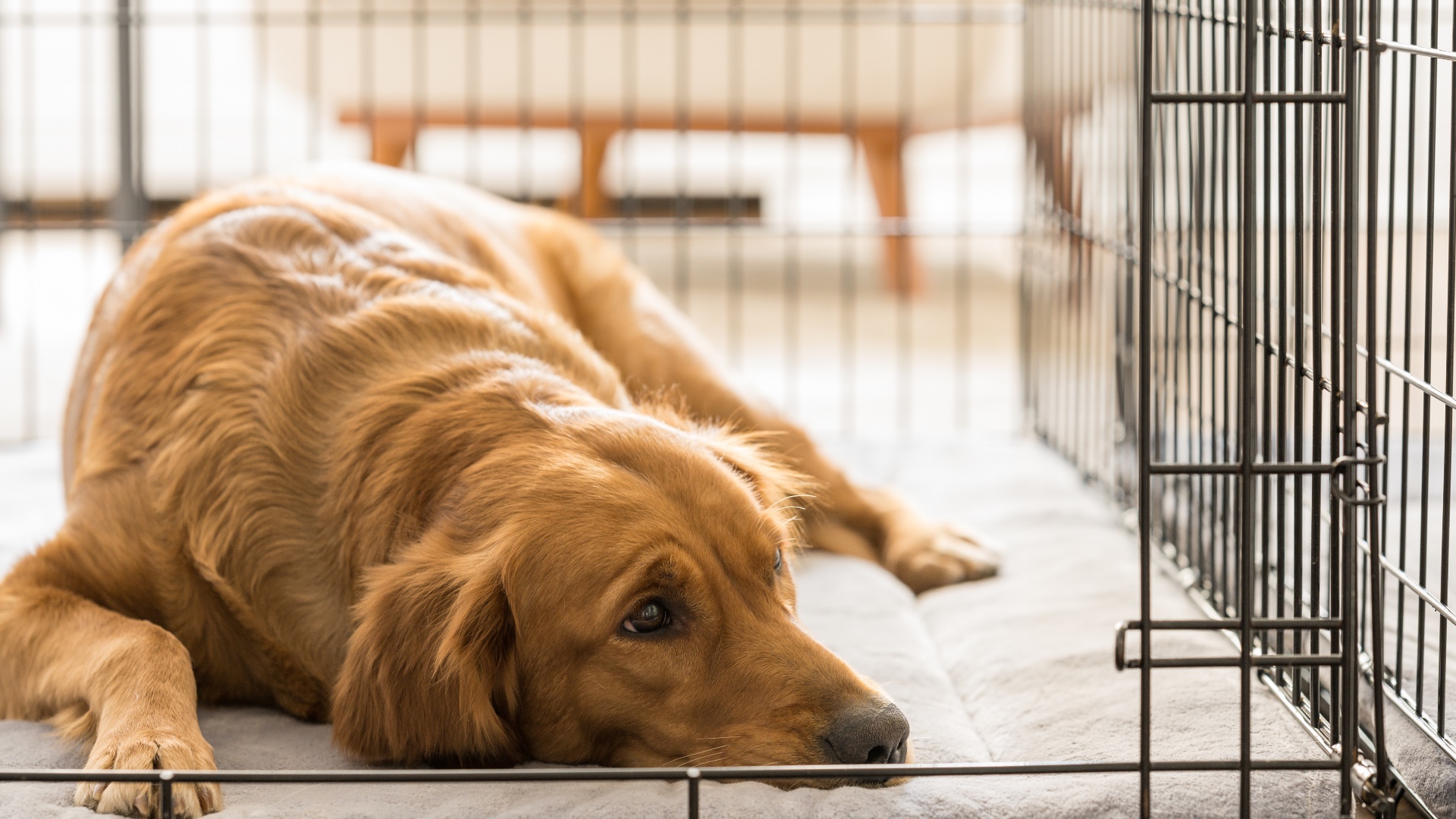Trainer shares three-step process to help your puppy feel comfortable in their crate
Does your little fur friend hate going in their crate? Here's how to make it easier...

Disclaimer: Unless specifically stated, any expert comments quoted in this news piece have been taken directly from the video cited below.
There are few things more exciting than bringing home a puppy for the first time. But, as you've probably already figured out, those little bundles of fluff certainly come with their fair share of challenges too!
From learning how to potty train a puppy to ensuring they master the perfect loose leash walk, there's a lot to teach your puppy in that first year of their life.
Trying to figure out how to crate train a dog is one of the things a lot of new pet parents struggle with and it's not hard to see why.
Puppies will often cry when crated for the first time as for the first two to three months of their life, they slept with their littermates, so being alone can feel scary to begin with.
Thankfully, expert trainer Alex Sessa, founder of Peach on a Leash, has shared a helpful video to Instagram in which she's revealing the three-step process she uses to build a positive association with the crate.
Read on to find out how she helps puppies feel comfortable in confinement...
PetsRadar Newsletter
Get the best advice, tips and top tech for your beloved Pets
A post shared by Peach On A Leash Dog Training (@peachonaleash)
A photo posted by on
1. Use treats strategically: "Toss food into the crate and step back. Wait for your pup to go in to get the food and then toss more inside," Sessa advises. "Keep the door open! When your pup is inside, food is flowing. If they choose to leave, food stops."
2. Pause throughout the training and assess where your puppy is at: "After a few reps, try pausing to see if your puppy will go in the crate BEFORE you toss any food," says Sessa. "If they do, you can then begin rewarding in the crate. Do this a few times."
3. Cue your puppy: "You can now add a cue word," explains Sessa. "Say your word, pause, and wait for your pup to go into the crate, then reward. Then gradually add distance."
After completing the steps listed above, Sessa says that you can then start to work on closing the door and gradually building up the time your puppy spends in their crate.
As with teaching your puppy any new skill, crate training takes time, patience, and consistency — but it's worth persevering. Not only is it a wonderful tool for potty training, but it will help keep your puppy safe and secure when you're out and about.

Kathryn is a freelance writer who has been a member of the PetsRadar family since it launched in 2020. Highly experienced in her field, she's driven by a desire to provide pet parents with accurate, timely, and informative content that enables them to provide their fur friends with everything they need to thrive. Kathryn works closely with vets and trainers to ensure all articles offer the most up-to-date information across a range of pet-related fields, from insights into health and behavior issues to tips on products and training. When she’s not busy crafting the perfect sentence for her features, buying guides and news pieces, she can be found hanging out with her family (which includes one super sassy cat), drinking copious amounts of Jasmine tea and reading all the books.
